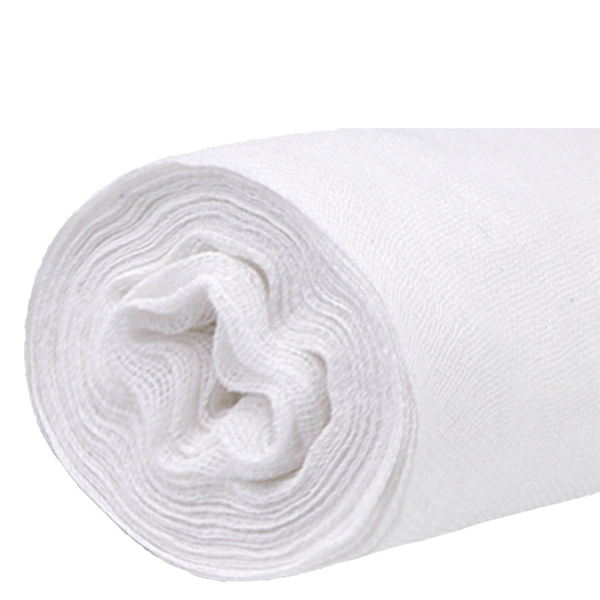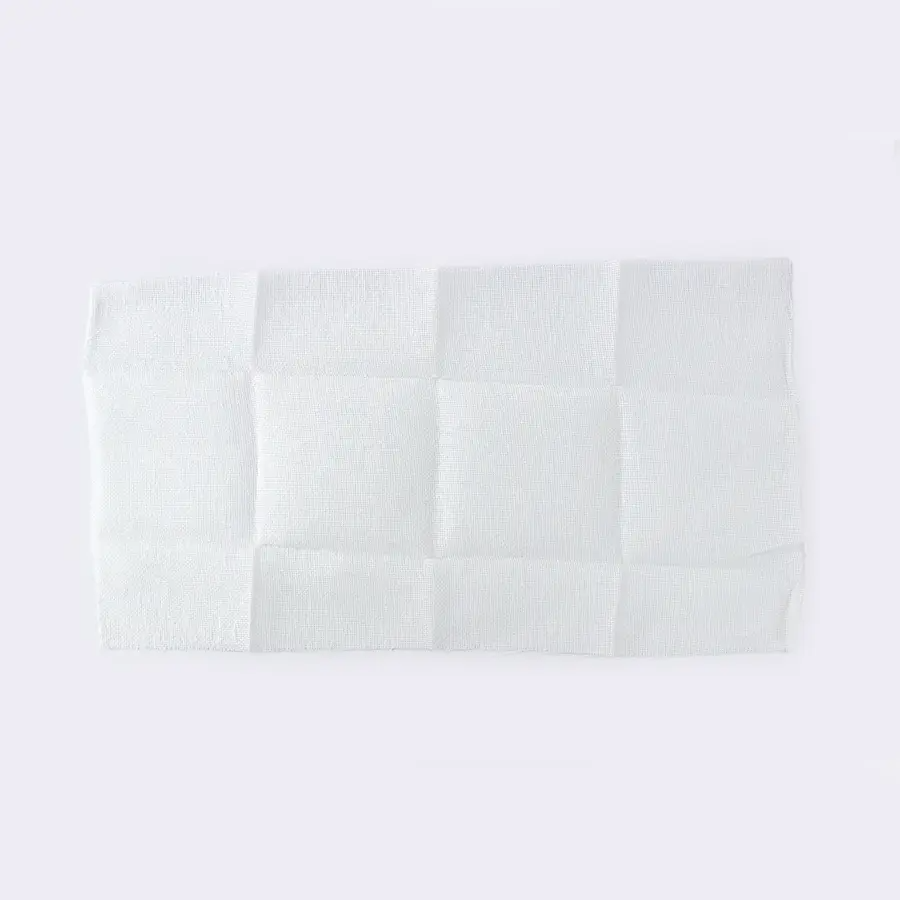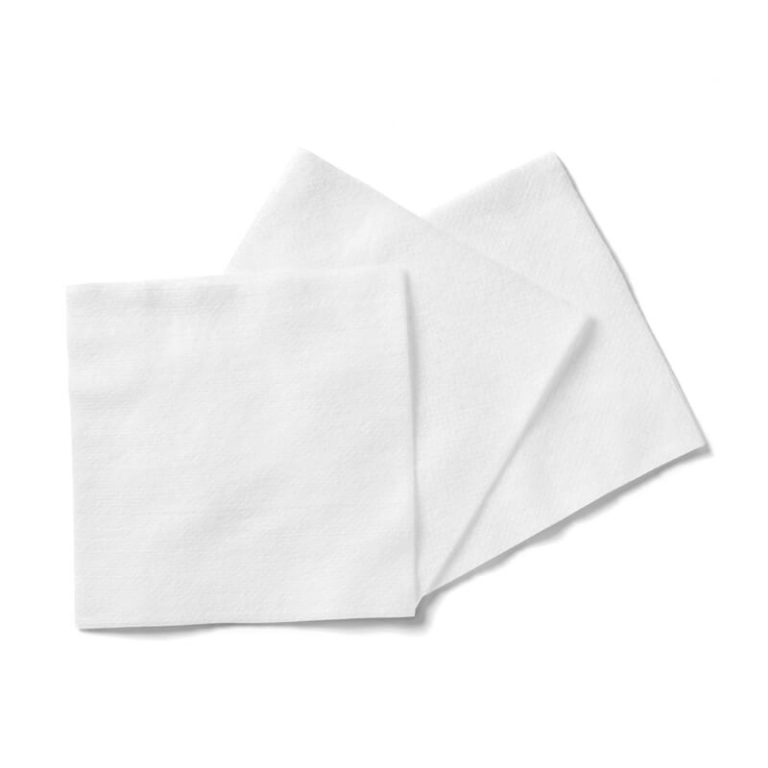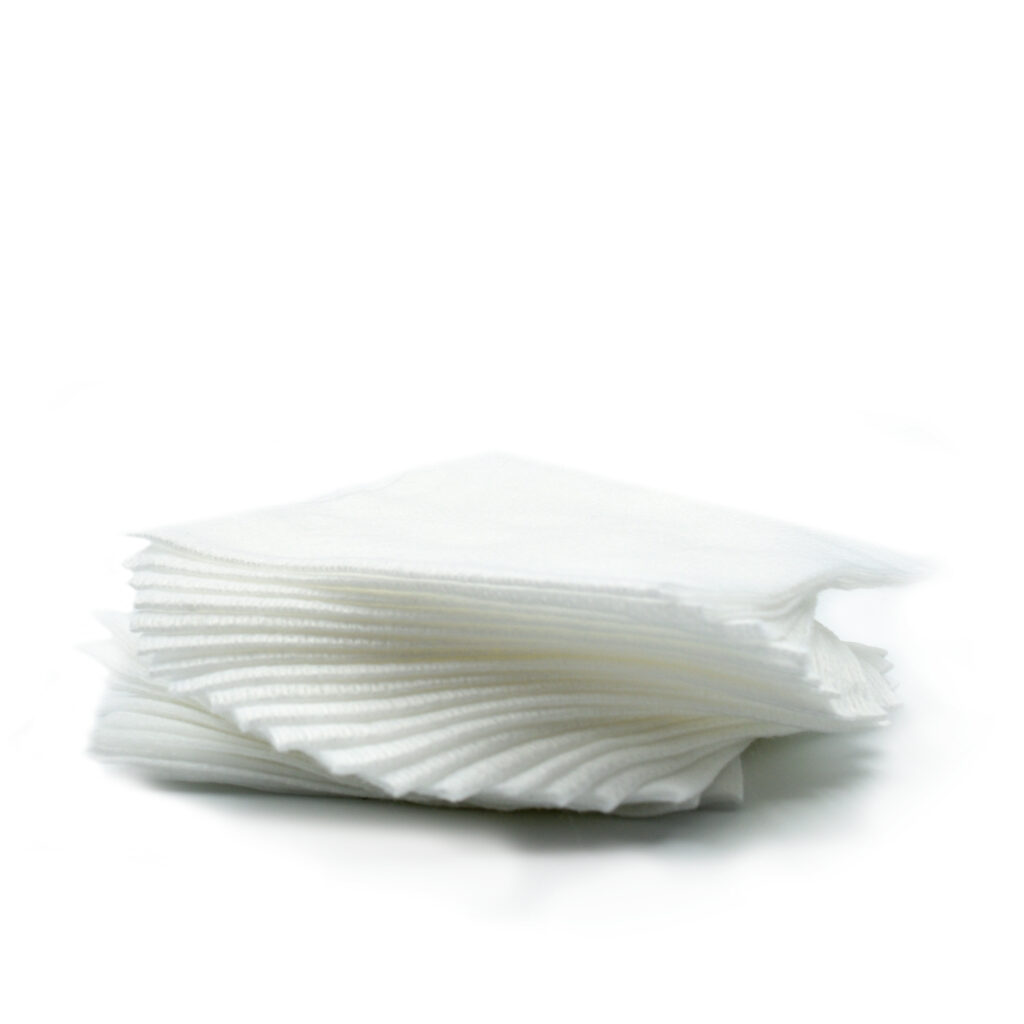The humble gauze pad is a cornerstone of medicine, found in every first aid kit, hospital supply closet, and clinic drawer. Its simplicity, however, can be deceptive. Knowing how to properly use sterile gauze pads is a fundamental skill that directly impacts wound healing, prevents infection, and ensures patient comfort. For procurement managers like Mark Thompson in the USA, sourcing high-quality medical consumables is only half the battle; ensuring they are used effectively is what ultimately validates the purchase. As a manufacturer of these essential items, I, Allen, have seen firsthand how the correct application of a simple sterile gauze pad can make all the difference. This guide will walk you through everything you need to know, from choosing the right type of dressing to applying it correctly, ensuring you provide the best possible wound care.
What is a Sterile Gauze Pad, and Why is Sterility Non-Negotiable?
A gauze pad is a piece of absorbent material, typically made of woven or non-woven cotton, designed to be used as a wound dressing. Its primary functions are to protect the wound from contamination, absorb wound exudate (fluid), and help promote healing. Gauze pads are versatile and can be used for cleaning wounds, as a primary dressing placed directly on the wound, or as a secondary dressing to add bulk and absorbency.
The key word here is "sterile." A sterile gauze pad has been treated to eliminate all microorganisms, including bacteria and fungi. It is then sealed in protective packaging to maintain this sterile environment until it is opened. When a wound breaks the skin’s natural barrier, it becomes vulnerable to infection. Placing a non-sterile dressing on an open wound is like inviting bacteria to a party. Using a sterile gauze pad creates a clean barrier against contaminants, drastically lowering the risk of infection and supporting the body’s natural wound healing process. This commitment to sterility is a core principle in the manufacturing of all our medical supplies, a standard that is expected by regulatory bodies like the Food and Drug Administration (FDA).
What are the Different Types of Gauze Pads Available?
Not all gauze pads are created equal. While they all serve the general purpose of a dressing, different types are designed for specific wound care needs. Understanding the types of gauze available allows for more tailored and effective treatment.
- Woven Gauze Pads: These are the traditional gauze pads, made from woven cotton fibers. They have excellent strength and are great for cleaning and packing wounds. However, their open weave can sometimes leave lint behind or adhere to the wound bed.
- Non-Woven Gauze Pads: Made from synthetic fibers pressed together, these pads offer superior absorbency and produce less lint compared to woven gauze. They are softer and conform well to the body, making them a comfortable dressing choice.
- Non-Adherent Gauze Pads: This is a crucial category. A non-adherent gauze pad has a special coating on one side that prevents it from sticking to the wound. This is a game-changer for painful wounds, burns, or wounds with delicate new tissue, as it minimizes trauma during dressing changes.
- Adhesive Gauze Pads: These combine a gauze pad with an adhesive border, creating an all-in-one dressing. They are convenient for smaller wounds that don’t require a separate bandage or tape to hold the pad in place.
Having a variety of gauze pads in your first aid kit or clinic ensures you are prepared for any type of minor injury.

A Step-by-Step Guide: Knowing How to Use Sterile Gauze Pads Correctly
Proper application is key to making a sterile gauze pad effective. Following these steps ensures a clean, secure dressing that promotes faster healing.
- Prepare Your Space and Yourself: Start by washing your hands thoroughly with soap and water. If possible, wear medical gloves to maintain a sterile environment. Gather all your supplies: the sterile gauze pad, antiseptic wipes or saline solution, and medical tape or a roller bandage to secure the dressing.
- Clean the Wound: It’s essential to clean the wound before applying the dressing. Gently flush the wound area with cool water or a sterile saline solution to remove any dirt or debris. Pat the surrounding skin dry with a clean cloth or another gauze pad, being careful not to touch the wound itself.
- Open the Sterile Gauze Pad: Carefully open the sterile packaging without touching the gauze pad inside. The inside of the wrapper is also sterile, so you can use it as a clean field to work from. Handle the gauze pad only by its edges.
- Apply the Dressing: Place the sterile gauze pad directly onto the wound. Ensure the pad is large enough to cover the entire wound area with a margin of about one inch (2.5 cm) around it. If the wound is deep, you might need to use folded gauze to provide cushioning.
- Secure the Gauze Pad: Use medical tape or a roller bandage to hold the gauze pad in place. The tape should be applied to the skin around the dressing, not directly on it. If using a bandage, wrap it firmly enough to be secure but not so tight that it cuts off circulation. For joints or areas that move a lot, an adhesive gauze pad can be a more convenient option.
When is a Sterile Gauze Pad the Right Wound Dressing?
Sterile gauze pads are essential for a wide range of situations in both first aid and clinical wound care. They are the go-to dressing for managing acute wounds where there is a risk of infection.
Gauze pads are used for:
- Abrasions and Lacerations: For scrapes and cuts, a gauze pad is perfect for absorbing minor bleeding and protecting the wound from bacteria.
- Minor Burns: After cooling a burn with water, a non-adherent sterile gauze pad can be used to cover the area. The non-stick surface is crucial to prevent damaging the delicate, healing skin.
- Post-Surgical Incisions: Surgeons often use a sterile gauze pad as the initial dressing over an incision to absorb any initial exudate and provide a protective barrier.
- Applying Ointment: A gauze pad can be used to apply medicated ointment to a wound without contaminating the tube of medication or the wound itself.
For heavily exuding wounds, a highly absorbent gauze pad is the ideal primary dressing, often used under a more absorbent secondary dressing.

Unpacking the Benefits of Non-Adherent Gauze Pads
Anyone who has ever had a dressing stick to a healing wound knows how painful dressing changes can be. This is where non-adherent gauze pads shine. These specialized dressing pads have a coating that prevents the fibers from becoming embedded in the wound exudate as it dries. From a manufacturing standpoint, creating an effective non-adherent layer that doesn’t impede absorbency is a mark of a high-quality product.
The primary benefit of non-adherent gauze pads is the reduction of pain and trauma during dressing changes. This is particularly important for patients with sensitive skin, children, or those with large or painful wounds like a burn or skin graft site. By preventing the dressing from sticking, non-adherent pads protect the delicate new tissue that is forming in the wound bed, which is crucial for efficient wound healing. These pads are a simple yet significant innovation in wound care.
How Often Should You Change a Gauze Pad Dressing?
The frequency of dressing changes depends on the nature of the wound. There is no one-size-fits-all answer, but here are some general guidelines:
- Amount of Exudate: The most important factor is how much the wound is draining. If the gauze pad becomes soaked with exudate, it needs to be changed immediately. A saturated dressing can lead to skin maceration (softening and breakdown) and creates a pathway for bacteria to enter the wound.
- Doctor’s Orders: For post-surgical wounds, always follow the instructions given by your healthcare professional. They will provide a specific schedule for dressing changes.
- Daily Changes: For most minor cuts and scrapes, changing the dressing once a day is a good practice. This allows you to inspect the wound for signs of infection.
- Signs of Infection: You should change the dressing and consult a doctor if you notice any signs of infection, such as increased redness, swelling, warmth, pus, or a foul odor.
Regular dressing changes are vital to maintaining a clean wound environment and monitoring the healing process.
What Defines Quality Gauze Pads for Your First Aid Kit or Hospital Stock?
As a procurement professional, your goal is to source products that are safe, effective, and reliable. When evaluating quality gauze pads, here are the key attributes to look for, which we prioritize in our production lines:
| Quality Attribute | Why It Matters |
|---|---|
| High Absorbency | The primary job of a gauze pad is to manage exudate. Poor absorbency leads to frequent changes and risk of maceration. |
| Guaranteed Sterility | The packaging must be robust and the sterilization process validated. This is non-negotiable for wound care. |
| Low-Linting Material | Fibers left in a wound can act as foreign bodies, causing inflammation and delaying healing. Non-woven pads are superior here. |
| Soft and Pliable | The dressing should be comfortable for the patient and conform easily to body contours, especially around joints. |
| Variety of Sizes | A good supplier, like us, will offer a variety of sizes of gauze pads and related items like gauze swabs to suit different wound types. |
Sourcing high-quality gauze dressings is a direct investment in better patient outcomes and more effective wound care.

The Critical Role of Gauze Dressings in the Healing Process
A gauze pad is more than just a cover; it is an active participant in the healing process. By creating a clean and protected space, the dressing allows the body’s natural repair mechanisms to work efficiently. Modern wound care often emphasizes the principle of moist wound healing. A moist wound environment has been shown to promote healing faster than a dry one.
A gauze dressing helps achieve this by trapping a small amount of natural wound moisture while absorbing the excess exudate. This balance is crucial. Too much moisture can lead to maceration, while too little can cause the wound to dry out and form a hard scab, which can slow down the growth of new cells. A high-quality gauze pad helps maintain these optimal healing conditions, making it an indispensable tool for everything from basic first-aid to advanced wound care products.
Common Mistakes to Avoid When Applying a Gauze Pad Dressing
Even with the best intentions, mistakes can happen. Here are some common errors to avoid when you use sterile gauze pads:
- Not Cleaning the Wound: Applying a sterile dressing to a dirty wound seals in bacteria, increasing the risk of infection.
- Touching the Pad: Touching the part of the gauze pad that will be in contact with the wound contaminates it, defeating the purpose of it being sterile.
- Making the Dressing Too Tight: A bandage or tape that is too tight can restrict blood flow, which is essential for wound healing.
- Leaving a Dressing on for Too Long: An old, saturated dressing is a breeding ground for bacteria. Follow guidelines for regular changes.
- Ripping Off a Stuck Dressing: If a gauze pad sticks, don’t pull it off. Instead, saturate it with saline solution or warm water to loosen it gently. Or, better yet, use non-adherent gauze pads from the start.
The Role of Gauze Pads in Managing More Complex Wounds
While this guide has focused on acute wounds, gauze pads serve an important role in managing chronic wounds as well. For conditions like a diabetic foot ulcer or venous leg ulcer, specialized gauze dressings are often part of a comprehensive treatment plan. For these chronic wounds, a gauze pad may be used as a primary dressing to absorb heavy exudate or as a vehicle to deliver topical medications.
In these advanced applications, the gauze dressing often works in conjunction with other advanced wound care products, such as compression bandages or hydrogels. For example, a simple disposable gauze swab can be used to gently debride a chronic wound before a more complex dressing is applied. The versatility of the gauze pad makes it a foundational element across the entire spectrum of wound care.

Key Takeaways
- Sterility is Paramount: Always use sterile gauze pads for open wounds to reduce the risk of infection.
- Follow the Steps: Proper wound care involves cleaning the wound, handling the sterile gauze pad correctly, and securing it properly.
- Choose the Right Pad: Use non-adherent gauze pads for sensitive or painful wounds like burns to minimize trauma during dressing changes.
- Change Dressings Regularly: Change the dressing daily or whenever it becomes saturated with exudate to maintain a clean environment and monitor for infection.
- Quality Matters: Source high-quality, highly absorbent, and low-linting gauze pads from a reliable manufacturer to ensure effective wound care.
- Avoid Common Mistakes: Never apply a dressing to a dirty wound, and don’t make the covering bandage too tight.
Post time: Oct-10-2025





